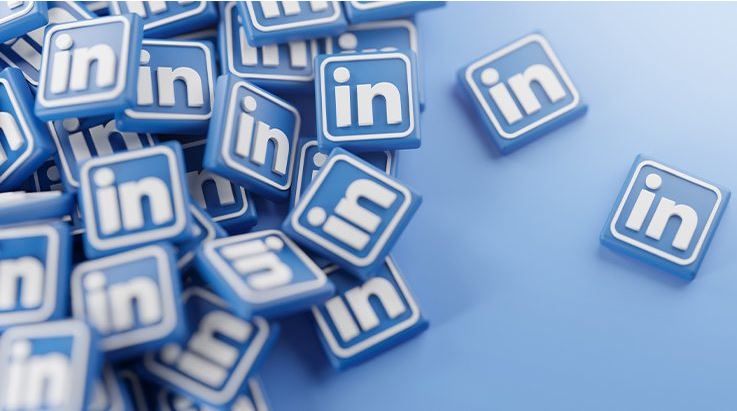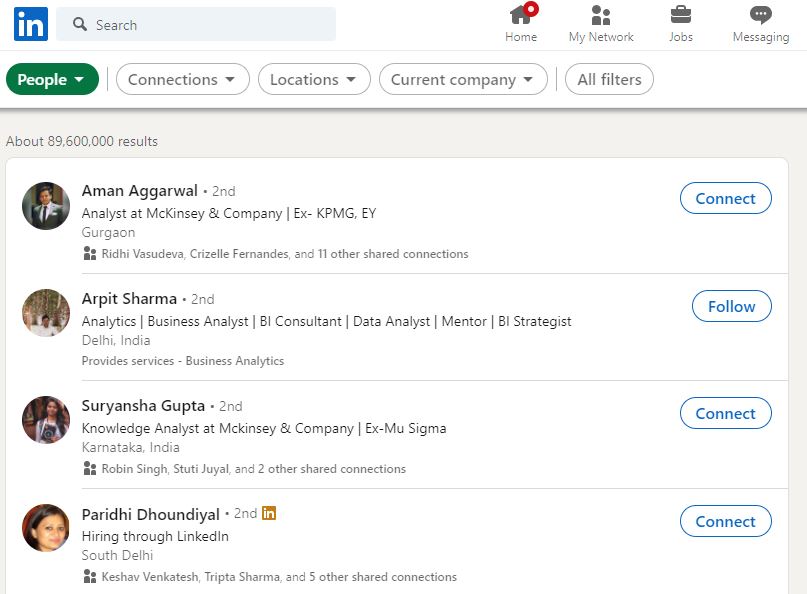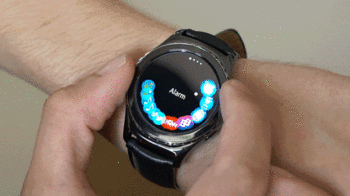
With over 500 million users, LinkedIn is the main social network aimed at professional contacts and can also be used by companies.
LinkedIn is the most famous and largest professional social network, focused on generating connections and relationships. There, professionals can create their resumes, look for jobs and make contact with people from all over the world. Companies, on the other hand, are able to seek out ideal candidates for their vacancies and potential customer profiles.
Have you ever stopped to think about how resumes were created in the past? Everything changed when we started to include professional information within a single platform: LinkedIn! Today you can’t be without knowing what LinkedIn is and all the possibilities you can have with this social network.
But the truth is, LinkedIn has long since stopped being just a site to update your resume. By completing 500 million subscribers, in April 2017, the social network established itself as the largest platform for business , gaining a strategic role for both companies and professionals.
Since then, the network has been growing at an accelerated pace, also gaining new features. And in this post you will check the details about what LinkedIn is, what it is for, 4 tips on how to start using it to get more results in your company and 5 tips for your own profile, if you intend to generate Leads and sales.
Table of Contents
What is LinkedIn? 🤔
Launched in 2003, at the time when several social networks were emerging, LinkedIn is a professional network where each user creates their profile and can follow or make connections with other people . Each member is associated with their professional identity, indicating their most important information such as:
- Profile photo and cover;
- Name, title, location and contact information;
- About/Biography;
- Activities (articles, publications, posts reactions);
- Professional experience (curriculum with the list of companies where he worked or works);
- Academic education;
- Licenses and certificates;
- Skills and recommendations;
- Achievements (awards, projects, publications);
- Interests.
LinkedIn started with basic functions, aiming to increase the professional networking of its users. With the increase of its user base, however, the platform was acquiring other features , which made it a business version of other social networks .
Tools such as company pages were developed , which serve for companies to publicize vacancies, publications and materials, working in a similar way to Facebook pages. Analyzing all the features, we can summarize that they are divided and support 4 fronts :
- Tools to recruit employees, especially candidates who are not actively looking for a job but have a suitable profile for what companies are looking for;
- Functions to help candidates actively find a job, with the list of vacancies and the possibility of applying through the network itself;
- Tools for sales teams to find and build connections with a potential customer base;
- Posts feed for people to stay in touch with your professional network, sharing and consuming content.
Currently, the social network is available in 24 languages, covering users from 200 countries.
How does the relationship between people on LinkedIn work?
Each person’s network is formed based on the connections made and on their professional relationships, whether they are their co-workers, university students, clients or references in their field.
To define the forms of interaction within the social network, LinkedIn has a categorization of connections , dividing them by different degrees:
- 1st degree connections : profiles that have a direct connection to yours, either because you accepted their connection invitation or because they accepted your invitation. It is possible to contact these connections directly via an inbox message;
- 2nd Degree Connections : These are the people connected with your 1st degree connections, but who do not yet have a direct connection to you. You can send an invitation by clicking the “Connect” button on the profile page or get in touch via an InMail, LinkedIn message template for Premium users;
- 3rd degree connections : These are people connected to their 2nd degree connections. In this case they can be of two types: if the person’s first and last name are displayed, you can click “Connect” to send an invitation. But if only the first letter of the last name is displayed, the option to “Connect” is disabled, but you can get in touch via InMail;
- LinkedIn User : These are LinkedIn users who do not fit into the degrees of connection, ie, they are outside your network.
To identify your level of connection with each profile, you can see a 1st, 2nd or 3rd degree icon next to the names, whether in search results, in your connection profile or even in your publications timeline.
What is LinkedIn for?
If you are a professional or a student looking for internships, a new job, outplacement in the job market, among others, LinkedIn is a good platform to search for vacancies: many companies and recruiters are present there, including disclosing details of the vacancy and requirements of each directly on the social network.
On the other hand, if you are a company investing in Digital Marketing , know that the social network is useful not only for recruiting candidates: it is also possible to publicize your posts and materials, make advertisements and even publish texts directly from the social network.
But how to generate good results through LinkedIn? We’ll talk more about these tips and possibilities in the next topics. 🙂
4 LinkedIn tips for your business
Once you know what LinkedIn is and its general functionalities, check out the 4 main actions that your company must do on the platform, used to create an important Marketing channel.
1. Have a company page
The company pages are relevant because they allow the company to build an audience , which can help distributing its publications and messages, attracting tanned and shares for their new posts on the blog, for example.
We recommend creating and optimizing your company page , keeping it up to date. A positive point, by the way, is the fact that on LinkedIn the competition for user attention is less than on Zuckerberg’s social network. First, because fewer companies are present; second because, ideally at least, you won’t have to compete with posts from friends, family, and kitten photos.
Publish there all new blog posts, new eBooks , rich materials and possibly indications of other vehicles that may also be relevant to your audience. Depending on the size of your business, posting once a day is a good frequency.
2. Post content on LinkedIn
With the base of followers you can get on LinkedIn, it’s critical that you create a content publishing strategy there. It is worth starting by sharing your publications with attractive calls for the audience profile you want to reach.
One possibility that LinkedIn also offers is to publish on its own platform , similar to a blog — including opening for comments, sharing icons across multiple networks and public viewing.
From the standpoint of both the professional and the company, publishing on the social network is very interesting, since, according to a survey conducted by LinkedIn, 75% of its users read or interact with content on the platform at least once a week . For companies, it’s a good way to build a reputation and reach a wider audience.
In general, however, posting on LinkedIn can end up being a dilemma, as the content is limited to the platform and does not allow you to have control over several other elements (the page design and links, for example), such as the the case of blogs.
For that, there are a few solutions, like posting just a summary or introduction on LinkedIn and then a link leading to the actual blog; post the content on the company’s blog and wait some time before posting it on the social network ; and write a text similar to the blog, but with another approach .
3. Join groups
Joining groups is a good way to use LinkedIn on behalf of your company . You can, for example, search for professionals who are experts in your area or who have specific positions in your target audience and, based on their profiles, consult the groups in which they participate. Based on their interests, you can map groups that are significant for your company.
A group’s most popular discussions are generally given more visibility by being at the top of the page. Contributing to these hot topics is one way to stay in the spotlight. Be very active, comment, ask questions and enjoy contributions from other participants.
Also share links to your blog content in context within a discussion . In addition to attracting qualified traffic to their content, if participants like it, they can increase their reach on other networks by sharing on Twitter and Facebook, for example.
The key to success is publishing quality content . The more content you produce, the more your community will support you and you will establish yourself as an authority on your chosen topic. This is a great way to generate leads for your business, simply and at a low cost.
4. Create ads
If on Facebook or Instagram it is possible to target ads by characteristics such as age and preferences, on LinkedIn the targeting criteria are focused on users’ professional information. That is why it is possible to reach decision makers in your market .
There are basically two types of ad solutions:
- Self-Service Solutions , suitable for investments in advertisements below R$ 15 thousand per month;
- Corporate Solutions , for investments in advertisements above R$ 15 thousand per month.
Within these two solutions, there are some types of ads: Sponsored content, Sponsored InMail, Text Ads (only for Self-Service Solutions), Dynamic Ads and Display Ads (the latter only for Corporate Solutions).
5 tips for professionals, consultants and agencies to generate leads and sales through LinkedIn
As a professional network, agencies, consultants and other professionals can use LinkedIn to achieve great results.
5 tips that will help you be more successful with your work on this social network
1. Your profile photo and biography are your business card
Before you start generating leads and then converting them to Leads and Customers, think about how you use your LinkedIn biography and what your profile picture looks like. As Aaron Burns once said, “You never get a second chance to make a first impression.”
See if your photo is appropriate for the persona you want to reach, if it has good quality and if it generates a good “first impression”. But another equally or more relevant factor is your title on LinkedIn.
Do you still use a title like “Job at Company X”? Forget it. The main mission of your title is to make the person who is viewing your profile for the first time understand how you can help them , thus arousing the interest of seeing your profile in its entirety.
Once you have an extremely flashy title, check out your summary. Can people understand what you do? Do you have a Unique Value Proposition (PUV)?
Your prospects need to be confident in your abilities and quickly understand how you can help them.
At the end of your summary, include a call to action. Some people like to post the email or ask to add it to LinkedIn.
2. Use your LinkedIn feed to promote and create content related to what you do
When you share content on LinkedIn, focus on the topics you’re an expert on. You can share a mix of your own content with what you found interesting from your own blog.
The content you write also needs to demonstrate that you are an expert in your field. Show your LinkedIn contacts that you understand what you’re talking about and that you also know related topics. Then explain how you can help them with these challenges .
For example, you can share a success story about a project you’ve completed and any quantitative or qualitative goals you’ve achieved. Or share a reflection on how your area of expertise has evolved in recent years, already demonstrating how you help customers position their businesses for these challenges.
3. Customize your initial message to add or accept new contacts
Once you have a profile and several posts that position you as an expert in your field, you are ready to start communicating with your connections to convert them into customers .
Once you start contacting connections, knowing what to say can be a challenge. But please don’t use standardized LinkedIn messages! You need to customize your message based on your knowledge of the person.
This way, it is much easier to generate a close relationship with each connection you make, taking advantage of it to offer something of value.
4. Monitor your notifications to celebrate special dates
People like to be recognized and congratulated, and you can use LinkedIn to recognize your connections on special occasions. These moments are a great opportunity to communicate with your prospects.
You can see special occasions in your news feed. LinkedIn also provides notifications when a connection has a birthday, takes a new position, or is celebrating a career milestone. To see special occasions, click on the “Notifications” tab in the upper right corner .
When you click the “Congratulations” button, LinkedIn opens a new message to your contact with a standardized message. Again, don’t use this type of message! Send a contextualized message to your contact, as in the example below:
5. Use LinkedIn’s advanced contact search to connect with potential prospects
This is perhaps the best tip ever. When you go outbound prospecting, use this LinkedIn feature : the advanced contact search! You can access it easily by clicking here .
It is an extremely effective tool for custom searches, according to the persona of your business. When clicking on “All filters“, a screen like this will appear:

Then just start filtering using the fields that best describe the profiles you want to find. But once you find them, remember step number 3! No standard LinkedIn message sending. Evaluate your prospect’s profile and send personalized messages to each of them.🙂
Of course, there are other good practices on the channel, mainly through the paid ad modalities that LinkedIn offers. You can, for example, offer free educational content and invest in ads to expand dissemination.
LinkedIn is really a very relevant platform to generate results for your company and for you as a professional. But like any other social network, establishing a meaningful presence takes time and won’t happen right away.
Therefore, it is not enough to be present on LinkedIn: it is also necessary to use its solutions and resources in a way that is well aligned with the company’s strategy .

